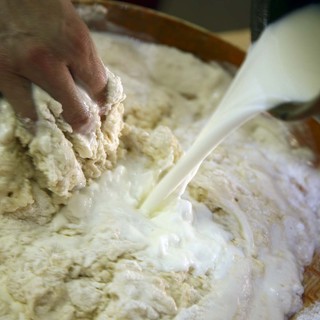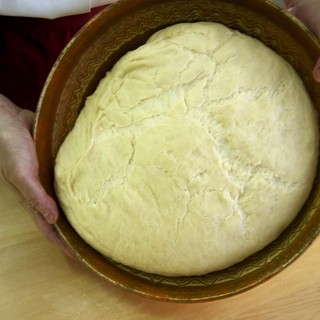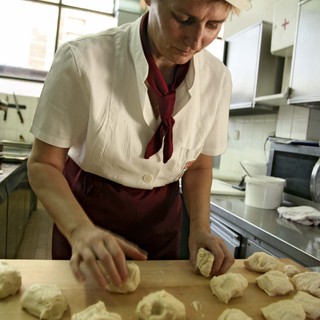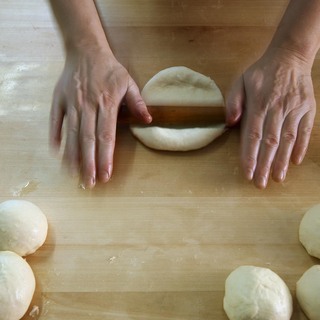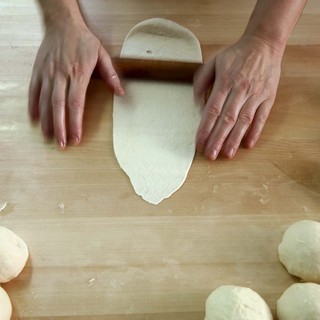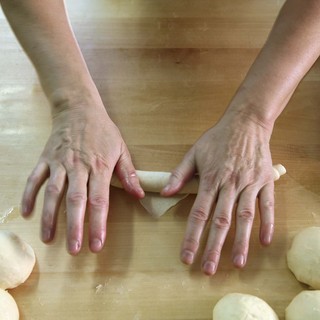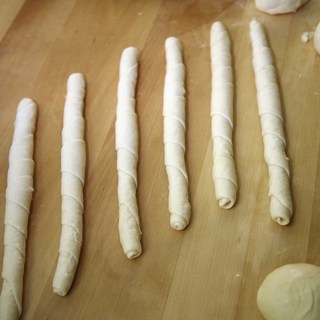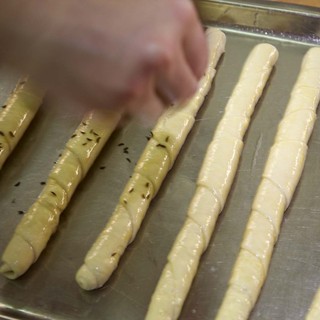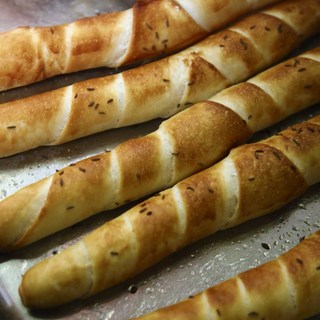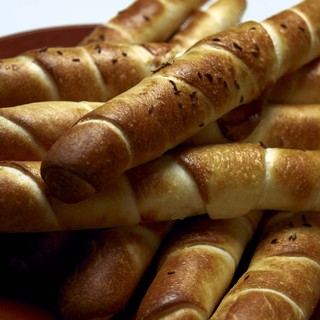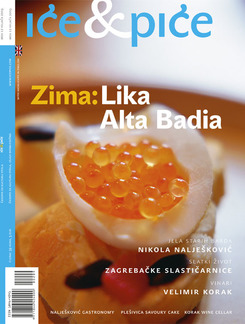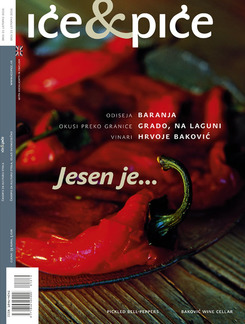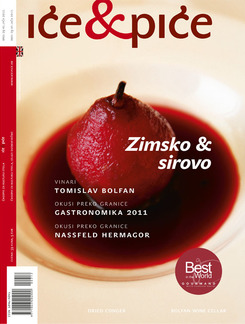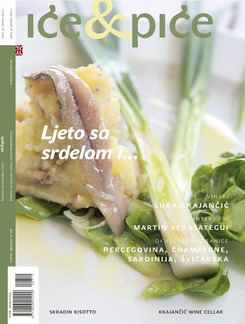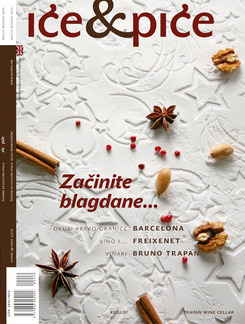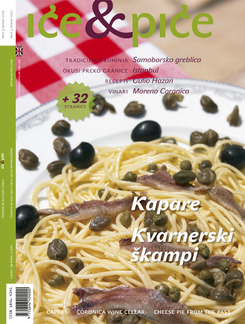There are surely quite a few interesting snacks among Varaždin rolls, but there is only one klipić. Its charm, elegance, and simplicity have helped it remain a part of the Varaždin regional cuisine for over 200 years, and it is now spreading further as a distinguished indigenous product…
Modern linguistic sensibility provides the foundations for associating with the Croatian word klipan (an oaf) rather than with the word klip (spadix), much like the word motor piston (also klip in Croatian) is closer to us than the word corncob (imagine, its Croatian equivalent is again klip). This initial throwing of a spanner into the readers’ business is to introduce a topic of Varaždinski klipić – a typical Kajkavian closeness-expressing diminutive word denoting more a souvenir from the old Croatian capital than a course or a dessert. Klipić is a nibble, a gentle name for longish fine milk roll, a bread stick that melts in the mouth. It is of beautiful golden sheen on the outside and white and crumbly-risen from the inside, neither sprinkled with sesame, large sea salt, caraway seed or poppy-seed, nor filled with marmalade or chocolate, which is all typical of other types of rolls and breads. Not at all appetizing ready-made copies of klipić that are all over Croatia non-elegantly sold at fast-food stands are usually topped with thick and very hard salt and water mixture, commonly reserved for beer-pretzels.
Klipić or klipič
One can nowadays only rarely come across klipić as it once was, for example in Stari fijaker, a restaurant in Zagreb, or in a bakery in the city of Križevci. My memory still vividly recalls a young girl carrying a basket filled with warm and fresh klipić bread sticks, crying “bake roooolls” and selling them up until the 1970s to children playing in the streets of the Zagreb quarter Vrapče.
The dictionary compiled by Anić defines klip, apart from the engineering sense, as a raceme, that of corn for example. However, the comprehensive dictionary of the Croatian Academy of Sciences and Arts states that the word klip has been in use since the 18th century, denoting a piece of wood or a stick that was thrown into the fruit tree crown in order to shake down the desired fruits, and also a type of a plant spike resembling a stick was named after it. This is how the stick-like bread came to be named klipić in Croatian. But the Varaždin klipić is additionally altered – it is klipič. Many among those more attached to high international cuisine claim this story is all much ado about nothing as klipič itself is neither a gastro-icon nor on material heritage list. In addition to this, it was not eaten much by our ancestors as it was unattainable for ones and insufficiently voluminous for the other, because it has since ancient times, precisely the one from the city of Varaždin, been elegant and of impressive style.
The indigenous Kajkavian name of Varaždinski klipič has since last year been registered at the State Institute of Intellectual Property of the Republic of Croatia under the number Z2006405. The Varaždin County Chefs’ Association has gained the exclusive right to use it.
Damir Crleni, a chef ahead of the others coming from not only Varaždin county but also wider national area, told a story of Varaždinski klipič from its beginnings in the 18th century, when tourist service industry started to develop and Grand Hotel Istra with the milk restaurant was opened. Milk and dairy products were manufactured there, and various breads and rolls were offered as well. Corn and wheat flour as the main ingredients of the Varaždin cuisine encouraged housewives to employ both their imagination and culinary skills in order to come up with some of today’s famous specialties such as mlinci (dried dough plates boiled in water), štrukli (dough filled with fresh cheese and then either baked or boiled), zlevke (pies made of dough and cheese, potato or spinach and then baked in oven)…
Klipič has similarly become a part of tradition and is commonly offered with the morning coffee at the city’s squares. The story does not directly lead us to find the origin of klipić in the simplification of bake rolls of the Vienna cafes at the time, but this is also a possibility. Regardless of that, klipić lived a life of its own in the 19th and the 20th century, and has done so in particular since 1964 when a hotel and an excursion centre got to be built on the Varaždin hills. Also, Varaždin has become a quite important bus stop, which is of relevance because the passers-by are that way given the opportunity to try a delicious klipić while the driver rests. Many other famous bus stops, such as Severin na Kupi, Delnice, or Skrad, have likewise up until recently offered the chance for passengers happening to go past them to try for example some fresh cheese with home-made cream, a piece of cheese, apple or blueberry strudel, as well as various tasty local midmorning snacks.
Intellectual property protection
But, according to chef Crleni, the brand of Varaždinski klipič has spread beyond the borders of Varaždin region. Klipič has become an integral part of gastronomy and gets to be served at various parties and fancy dances, but also to ladies selling at the open market. The chefs from Varaždin have recently at various exhibitions and competitions circulated the story about klipič, which is why it enjoys its fame in many so faraway cities like Oslo, Vienna, Budapest, Berlin, Paris, London, Warsaw etc.
Klipič also managed to enter gastronomic magazine Kuchnia, which dedicated a whole issue to Croatia and consequently also to the Varaždin gastronomic heritage. In addition to this, a Pole named Robert Malkowicz is shooting a DVD on how klipić is prepared. The people of Varaždin have also suggested that billboards displaying the inscription Varaždinski klipiči be placed by the Varaždin motorway exit. This idea was also via the Croatian National Tourist Board mediated to a famous Hungarian actor, Istvano Palffyem, who is writing a book on Croatia and her gastronomy, which is to say about Varaždin gastronomic heritage as well.
To sum up briefly, it was most of all thanks to the Varaždin County Chefs’ Association that klipič not only got to be certified but also got to hold the leading position among the indigenous dishes at presentations and other similar events all over Croatia.
Not every klipić is Varaždinski klipič is a slogan imprinted on promotional sacks by the Varaždin County Chefs’ Association. The chefs, as the most qualified ones, are thereby trying to contribute to the standardization of this bread, to make its quality and appearance uniform, even outside the borders of the gastronomic offer of the county, where it is for the time being offered as a certain prototype only by the hotel Turist. The people of Varaždin have the intention of promoting and advertising their protected brand - klipič, as Mr Crleni points out, in all bigger Croatian cities. Posterior to this copyright there appeared a debate regarding the possibility of sooner protection of rather some other item from the well-known Varaždin traditional table – especially because the wealthy butchers, not bakers, were known to organize grand feasts and enjoy at abundant tables. These debates should however only serve to remind us that what is valuable should be retained in the memory and on the table. And everybody should know that the first brand is after all – Varaždinski klipič.

